mother teresa

THE BANNER HANGING from St. Peter’s Basilica in Rome showed Mother Teresa, hands clasped, looking out over the 100,000 faithful who had come to celebrate her sainthood. I was part of that crowd last September, and as I looked at that banner I couldn’t tell if her facial expression was a smile or a grimace.
In a museum a few blocks away were glass cases that displayed her sandals, her walking stick, and her blue and white sari, as well as letters, photos, and a timeline charting every major event in her life. In a different cathedral the night before, an orchestra and choir performed a magnificent original oratorio written in her honor.
Under the banner’s gaze at St. Peter’s, the hierarchy of the Catholic Church was seated, along with dignitaries from dozens of countries. I wondered what thought bubble would be most appropriate if one suddenly appeared above Mother Teresa’s depiction on the tapestry. I decided it would be this: “If you only knew.”

We are living in a time of unprecedented economic disparity between the rich and the poor, the haves and the have-nots. Masses live in poverty so that a handful of people can live as they wish. The world’s three richest people own more than the combined economies of 48 countries. The average CEO in the US is making 400 times the average worker.
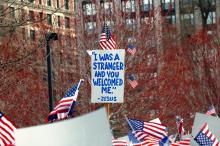
Since it was unveiled last week, President Trump’s proposed budget has been widely denounced as “immoral” and downright “evil” for boosting defense spending by billions while demanding drastic cuts to vital aid programs.
Yet if liberals and some conservatives are upset about cuts to programs that help ensure clean drinking water, give financial aid to low-income college students, and even help support Meals on Wheels — which delivers nearly a million meals a day to the sick and elderly — would Jesus have a problem with slashing assistance to the needy?
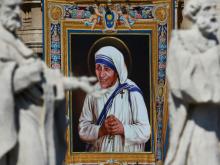
Mother Teresa, the tiny nun who devoted her life to the poor, was declared a saint by Pope Francis at the Vatican as he celebrated her “daring and courage,” and described her as a role model for all in his year of mercy.
At least 120,000 people crowded a sun-drenched St. Peter’s Square for the canonization of the acclaimed nun who may have worked in the slums of Kolkata but was a force to be reckoned with by political and religious leaders around the world.

A sign that hung in the volunteer room at Shanti Dan quoted Mother Teresa, reading, “I pray each one of you to be holy and so spread [God’s] love everywhere you go. Light [God’s] light of truth in every person’s life so that God can continue loving the world through you and me.”
This was not just a commission for those serving in Kolkata. Poverty, violence, hatred, sadness, hopelessness, crime, greed, darkness, jealousy exist in our homes across the world. And Mother Teresa was known for encouraging people to serve their neighbors in their hometowns or wherever they are called, striving to love each person as God loved us.
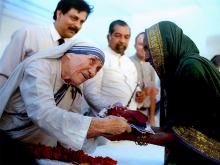
The Rev. James Martin is a Jesuit priest and popular author who wrote about his lifelong fascination with the saints and the many aspects of sainthood in the Catholic tradition in the best-selling book My Life With the Saints.
Loyola Press is issuing a 10th anniversary edition of Martin’s memoir in September, which also coincides with the Sept. 4 canonization of Mother Teresa of Calcutta, who even during her lifetime – she died in 1997 – was regarded by millions as a “living saint” for her work with the destitute in India and around the world.
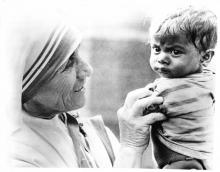
Mother Teresa of Calcutta will be made a saint on Sept. 4. Pope Francis made the announcement on March 15 during a meeting with Catholic cardinals, which also saw four others approved for sainthood this year.

Pope Francis has approved new rules to tighten financial oversight of the canonization process after leaked documents revealed abuses and high costs in creating saints. The new measures focus on how the Holy See handles applications for sainthood, which can be a lengthy and expensive process that involves examining claims made by supporters of a would-be saint.
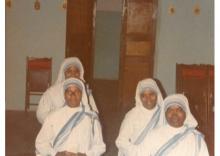
Pope Francis said four nuns executed by gunmen in Yemen at a home where they cared for elderly and disabled residents are “today’s martyrs.” His remarks on March 6 about the brutal killings in the increasingly lawless country on the Arabian Peninsula came a day after he decried the “diabolical violence” that claimed the lives of a dozen others at the Catholic-run facility in the Red Sea port of Aden.
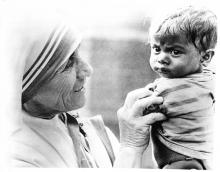
Pope Francis has given final clearance for Mother Teresa — called “the saint of the gutters” for her work with the poor in India — to become an official saint, a move welcomed by the archbishop of Calcutta as “a real Christmas gift” from the pontiff.
Francis took the step by signing a decree declaring that the inexplicable 2008 recovery of a Brazilian man who suddenly woke from a coma caused by a viral brain infection was due to the intercession of the Albanian nun, who died in 1997.
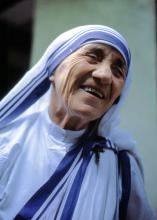
The Vatican has announced that Pope Francis will canonize Mother Teresa in September 2016, according to Gerard O’Connell with America magazine.
Known for her zealous commitment to serving the poor, Teresa of Calcutta’s beatification process was one of the shortest in modern history, and was completed on Oct. 19, 2003, by Pope John Paul II — just six years after she died in 1997.

Last spring, I heard a terrific talk from Shane Claiborne at the Festival of Faith & Writing. Claiborne, a prominent voice in progressive Christian circles, lives in Philadelphia’s inner city, where he and the other inhabitants of the Simple Way community practice a “new monasticism.”
They value hospitality and communal living, seek to build relationships with those living in their neighborhood, and are concerned with issues around poverty and wealth, power and violence. From the descriptions I’ve read, the Simple Way practices similar values to the Church of the Saviour in Washington, D.C., where I worshiped for most of my 20s. The Church of the Saviour had the unusual distinction of taking both Jesus and social justice seriously. It was a community in which I was comfortable speaking like an evangelical, while voting and approaching social issues like an Episcopalian.
Listening to Claiborne speak back in April about justice and love and how our stories illuminate God’s kingdom, I felt at home. Here was the kind of guy I used to worship with in my earnest urban-dwelling days. His message, his words, and his stories felt intimate, familiar, and inspiring.
That is, except for this one story...
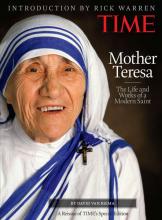
On Sept. 5, 1997, the world mourned when Mother Teresa, whose work with the poorest of the poor made her a global icon, died of a heart ailment at age 87.
Exactly 10 years later, the world did a double take, when a volume of Teresa's private letters revealed that the tireless, smiling nun spent the last 39 years of her life in internal agony. Jesus, she wrote, no longer seemed present to her, in prayer or even in the Eucharist. In letter after tormented letter she described an unrelenting spiritual "dryness,” a "torturing pain." Her smile was "a big cloak" of deception. She admitted at one point to doubting God's existence. Eventually she apparently became more reconciled to her condition; but as far as we know, she died with it.
"My father was born by a river bed and left to die. My mother grew up in extreme poverty. They made it. I am their story, they inspire me!" These are the words of my new friend Rudo, an amazing young woman from Zimbabwe who has come through so much and has now been chosen to be one of a thousand ambassadors of the Make Poverty History Road Trip who next week are acting to make history.